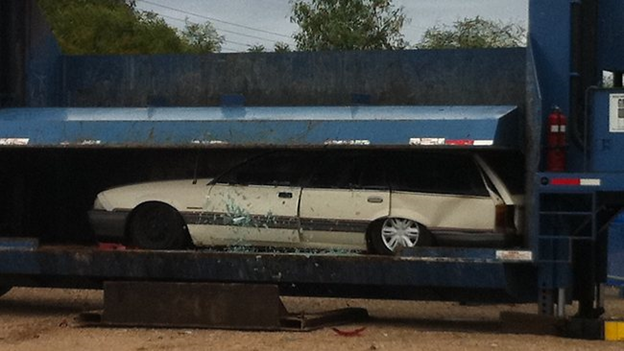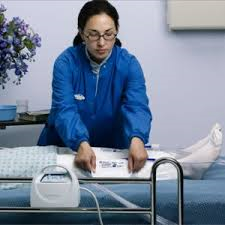What is a Pneumatic Compression Device?
Posted by J Bergsten on 9th Oct 2014
The words can be a bit scary. Pneumatic Compression Device. The first time I heard them I thought of a car being crushed or a jackhammer. If you have had one of these machines recommended to you, I can assure you, they are not that bad. In fact, they are quite the opposite. They’re great. They are extremely beneficial in a multitude of situations. We, here at the Medcom Group, want to make sure that we are getting the correct system in place for your needs. So, what is your doctor trying to prevent or eliminate? Whatever it is, there is a unit for it.

Sequential Compression Device (SCD):
Have you recently had surgery and are going to be laid up in bed for a while? Was the surgery to one of your legs or hips? Do you have a history of blood clots? Have you had a reaction to pharmaceutical blood thinners? If you answered yes to any of these scenarios, you might be in line for an SCD. The SCD is a machine that pumps air into a sleeve that goes around your leg. The sleeve has multiple chambers that fill with the air sequentially, distally to proximally (from your foot toward your hip). This compression up the leg forces blood through your venous system and back toward the heart. Deep Vein Thrombosis (DVT) or blood clots can form in your legs if your legs are stationary. The SCD keeps the blood flowing, minimizing the risk of DVT. If a DVT forms, it can break loose moving throughout the body. Depending on where it stops, it gets a different name. In the brain, it’s called a stroke. In the lungs, it is a pulmonary embolism (PE). Either is potentially fatal. The SCD can help reduce the chance of these conditions from happening.


Lymphedema Pump:
Do you have venous insufficiency? Have you had cancer and had to have lymph nodes removed? Do you suffer from chronic lymphedema? Have you tried massage or compression stockings to lessen edema (swelling) in your extremities without success? Is edema causing pain and lack of mobility? In these scenarios, you might have success with a Lymphedema Pump. The lymphedema pump works similar to the SCD discussed above, but it can be used on just about every part of your body (Do not try on your head! It’s a bad idea). The garments go over the affected body part, whether that is your arm, leg, torso, or even everything up to your neck. The machine inflates, distally to proximally, squeezing the excess fluid back toward your lymphatic system, promoting the natural movement the body requires. The garments are different than the SCD machines as they are made from ballistic nylon (originally designed for World War II flak jackets!) as compared to lightweight cotton for the SCD sleeves. This is necessary as most causes of lymphedema are longer term issues than the short term DVT prevention of the SCD. In other words, the Lymphedema garment lasts longer for chronic issues
AVI Foot Pumps:
Do you have any of the conditions listed above for either the SCD or the Lymphedema Pump? The AVI Foot pump might just be a great solution for you. A lot of what causes the above conditions is a lack of movement in the patient. The AVI Foot pump mimics the natural sequence of physical venous flow. The foot pump has a rigid sole and a chamber that inflates into the arch of the foot. It inflates rapidly with high pressure, pushing on the plantar plexus, mimicking the natural pressure of walking.

Whichever way your doctor wants to go, we have an option for you. Please give us a call at 877-301-4276 with questions.
